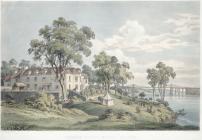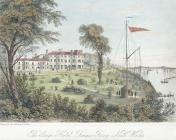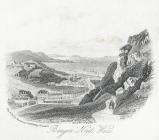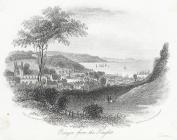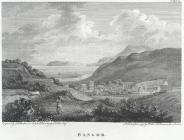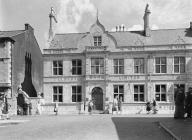Bangor
Bangor has been a cathedral city since the twelfth century and claims origins with the sixth century St Deiniol. Bangor remained a comparatively small settlement until the beginning of industrial slate mining near Bethesda at the end of the eighteenth century and the opening of the Menai Suspension Bridge in 1826.
Penrhyn Castle on the outskirts of the city and the mountain uplands of Snowdonia provided further prominent points of interests for explorers of Bangor’s picturesque surroundings. With the rise of seaside resorts along the north coast of Wales, similar efforts were undertaken in Bangor during the nineteenth century. A pier eventually opened in 1896, but without the sandy beaches of Rhyl and Llandudno, seaside tourism never quite caught on. In 1836, the German traveller Karl von Hailbronner found himself transported to ‘this little Gulf of Naples’ as he looked over Beaumaris Bay and heard the sound of the evening bells drifting over from the cathedral. By 1851, Ludwig Rellstab, another German traveller, found a transformed city as the previous calm and peaceful atmosphere had been replaced by the noise of countless horse carriages and tourists.


